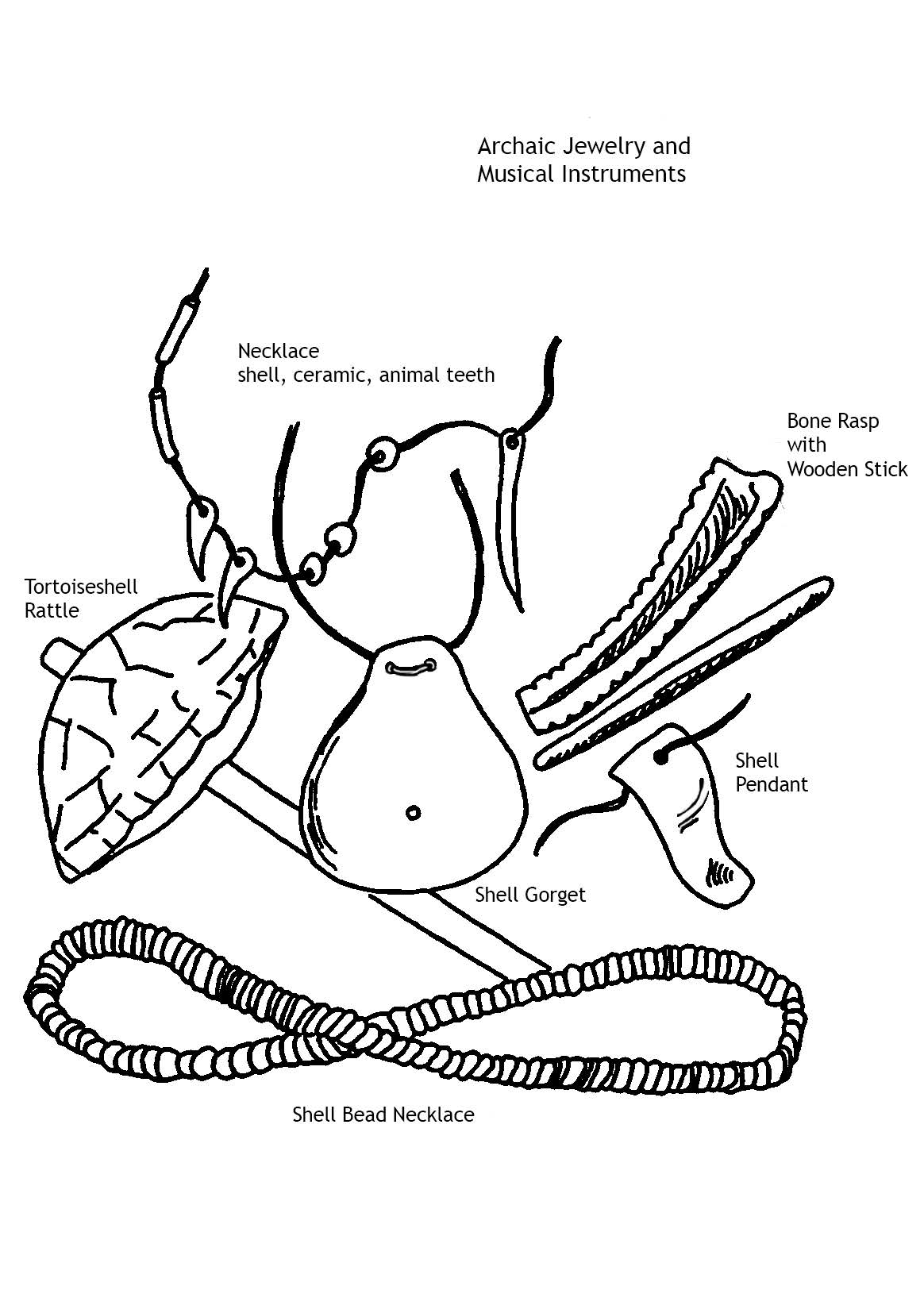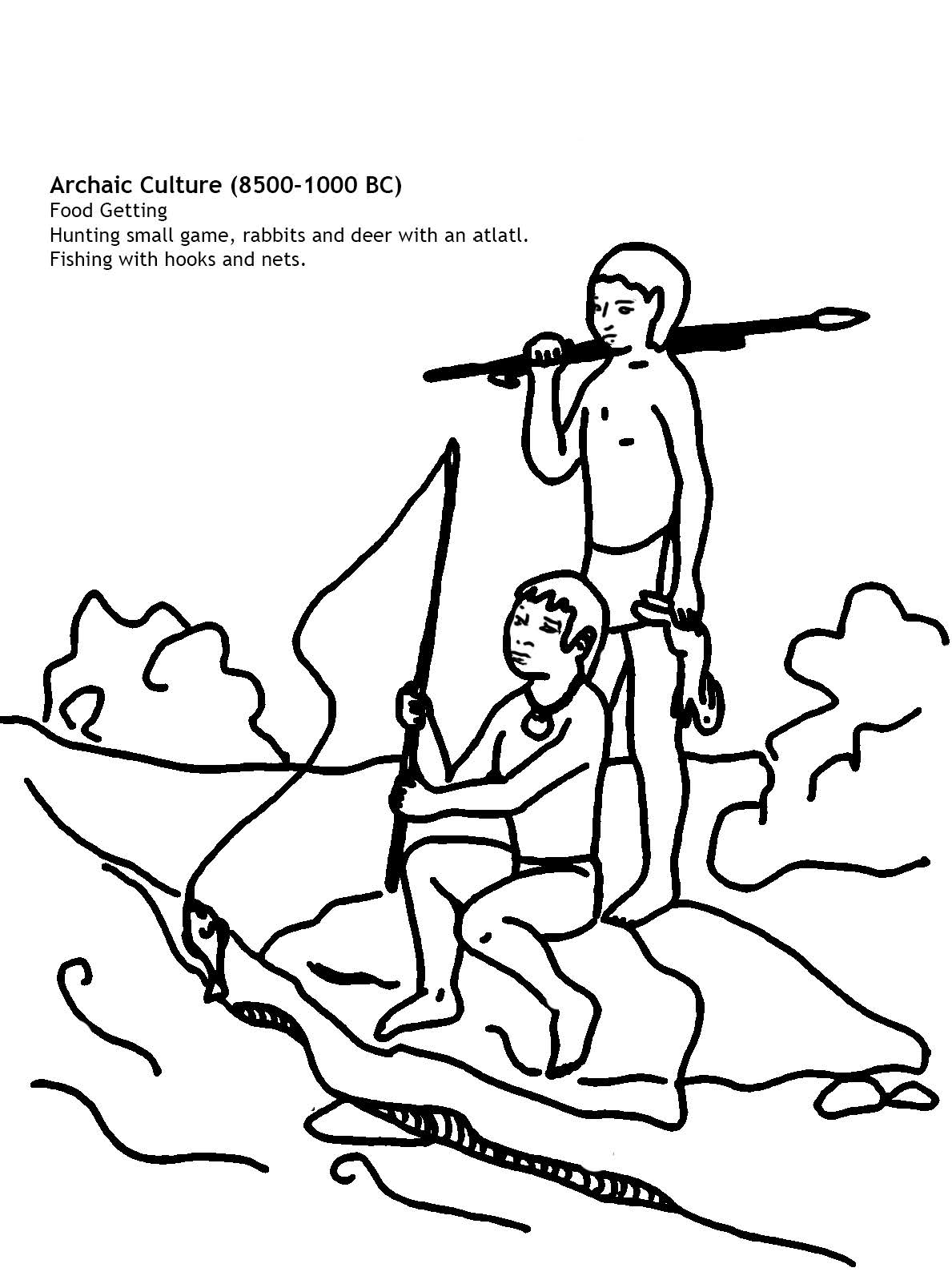The Archaic (8,000 to 1,000 B.C.E)
The Archaic period is usually split into three parts: the Early Archaic (8,000-6,000 B.C.E.), Middle Archaic (6,000-3,000 B.C.E.), and the Late Archaic (3,000-1,000 B.C.E.). Coming after the Paleoindian period, the Archaic introduces many changes, including notched projectile points, the domestication of plants, and the creation of pottery. During the Archaic, we begin seeing evidence of more permanent settlement, though these camps are still not long-term. Sites for camps were used multiple times, potentially at specific times of the year in order to gather nearby resources like berries, nuts, or local game. People during the Archaic also began using rockshelters for shelter.

Tools during the Archaic are more diverse than previously, which can be seen through the creation of groundstone tools like grooved axes in addition to flake stone tools, as well as the use of atlatls for hunting. The creation of these tools was useful as groundstone has a longer use life than flake stone tools. While groundstone did not eradicate the use of flake stone tools, especially since you cannot make projectile points from it, the use of more reliable tools means that people were able to spend less time fixing or creating tools. There is also a difference in projectile points, with the fluted Clovis points used during the Paleoindian disappearing and notched points taking their place during the Early Archaic. The use of bone and antler artifacts such as awls, pins, and atlatl hooks, is also found during this phase.

Other changes during the Archaic include more complex mortuary practices and long-distance trade. This trade network seems to have run down to the Gulf and Atlantic coast, as shell beads are commonly found in burials dated to the Middle Archaic. More rare finds include copper, which would have come from the north. Also found in burials, though sparsely, were potential medicine bundles, which imply that shamans may have existed during the Middle Archaic. This could represent a complexification of religion during this period.

Common foods eaten during the Archaic include fish, small game, and river mussels. It is also during this period that plants like squash and gourds begin to be domesticated. Though there is no evidence for plant cultivation or gardening, there is evidence that groups were relying more heavily on gathering techniques than they previously had. This can be found through the increased presence of plant processing tools such as grinding stones, manos, and mutates. These tools also imply that the overall process of food production was becoming more complex.

Rather than using a camp for a few days or weeks at a time, occupation was more long-term with an occupancy of a few months to years at a time. This increased sedentism led to base camps becoming more important. With a longer occupation at base camps, groups could then set up hunting camps in the area where part of the group would then use while others, such as the very old and very young, would remain at the base camp. Base camps can be identified through the features created at them, which include hearths and storage and processing pits. The discovery of the remains of houses and the presence of burials are also good indications that a site was used as a base camp.
Overall, the Archaic exhibits an increasing complexification of culture, tools, subsistence strategy, and mobility patterns. This is most likely due to the creation of modern ecological standards that slowly forced populations to adapt to their new surroundings. As their subsistence strategy became more complex, the use of Paleoindian tools such as fluted Clovis points were diversified to provide greater use. In some cases, like the use of groundstone tools, this was so that tools would last longer while in others, like the switch from fluted to notched points are about the changing hunting strategies from megafauna to smaller wildlife like the white-tailed deer.
For more information about the Fort Ancient culture, please see the resources below:
- The Kentucky Heritage Council
- Kentucky Archaeology edited by R. Barry Lewis
- Discover Kentucky Archaeology
(All images from Culture History of Kentucky Coloring Book)